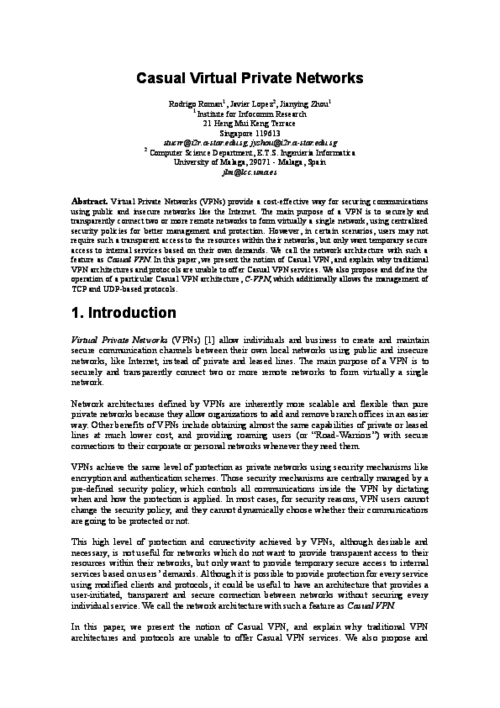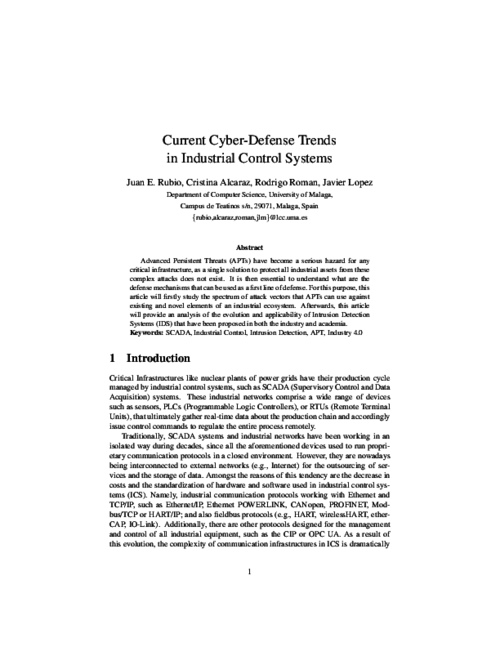 ]
] International Journal of Computer Systems Science & Engineering, vol. 3, CRL Publishing, pp. 185-192, 2005.
Abstract
Virtual Private Networks (VPNs) provide a cost-effective way for securing communications using public and insecure networks like the Internet. The main purpose of a VPN is to securely and transparently connect two or more remote networks to form virtually a single network, using centralized security policies for better management and protection. However, in certain scenarios, users may not require such a transparent access to the resources within their networks, but only want temporary secure access to internal services based on their own demands. We call the network architecture with such a feature as Casual VPN. In this paper, we present the notion of Casual VPN, and explain why traditional VPN architectures and protocols are unable to offer Casual VPN services. We also propose and define the operation of a particular Casual VPN architecture, C-VPN, which additionally allows the management of TCP and UDP-based protocols.

Wireless Communications and Mobile Computing, vol. 11, Wiley, pp. 267-276, 2011. DOI
Abstract
The wireless sensor networks (WSN) paradigm is especially vulnerable against external and internal attacks. Therefore, it is necessary to develop security mechanisms and protocols to protect them. These mechanisms must become an integral part of the software architecture and network stack of a sensor node. A question that remains is how to achieve this integration. In this paper we check how both academic and industrial solutions tackle this issue, and we present the concept of a transversal layer, where all the different security mechanisms could be contained. This way, all the elements of the architecture can interact with the security mechanisms, and the security mechanisms can have a holistic point of view of the whole architecture. We discuss the advantages of this approach, and also present how the transversal layer concept was applied to a real middleware architecture.

Computers & Security Journal, vol. 87, Elsevier, 11/2019. DOI
Abstract
Advanced Persistent Threats (APTs) have become a serious hazard for any critical infrastructure, as a single solution to protect all industrial assets from these complex attacks does not exist. It is then essential to understand what are the defense mechanisms that can be used as a first line of defense. For this purpose, this article will firstly study the spectrum of attack vectors that APTs can use against existing and novel elements of an industrial ecosystem. Afterwards, this article will provide an analysis of the evolution and applicability of Intrusion Detection Systems (IDS) that have been proposed in both the industry and academia.

IEEE Security & Privacy, IEEE, In Press.